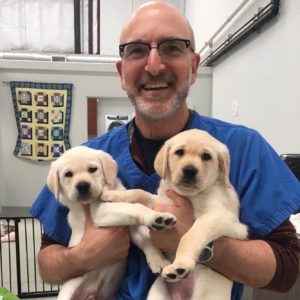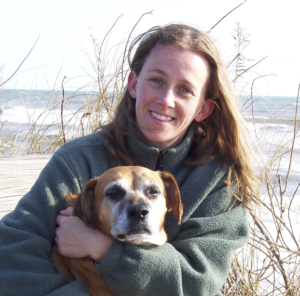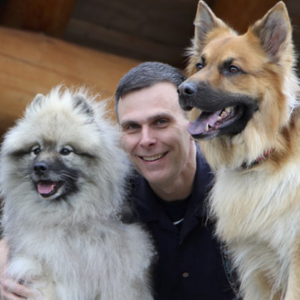How Did the Dog Aging Project Begin?
June 24, 2019 - 5 minutes read
Daniel Promislow
It was 2007. I had been working on the biology of aging for almost 20 years, and for the past 12 years, I had been running a fruit fly lab at the University of Georgia. One day an issue of Science, the premier science journal in the country, showed up on my desk. The cover showed a Great Dane and a Chihuahua walking side by side. The paper was about the genetics of size, but it immediately led me to wonder if we could figure out why big dogs (like Great Danes) tend to be much shorter lived than small dogs (like Chihuahuas). I knew a lot about fruit flies but nothing about the biology of dogs.

Katee Creevy
I reached out to the UGA College of Veterinary Medicine, and they put me in touch with Dr. Kate Creevy, an early career veterinary internist. It was immediately obvious to both of us that there were rich parallels between human and canine aging. Taking advantage of the extensive medical and genetic information available about dogs, we began our first project together, investigating causes of death among companion dogs. The more we discovered, the more it became clear that studying aging in dogs held powerful potential to advance veterinary medicine and basic aging biology. It also became clear that a large, nationwide, long-term study of companion dogs would be the best way to fully achieve this potential.

Matt Kaeberlein
Meanwhile, on the opposite side of the country, Dr. Matt Kaeberlein was advancing the understanding of the basic biology of aging using biochemical, genetic, and molecular approaches at the University of Washington. In addition to running a busy laboratory, he co-directed the Nathan Shock Center of Excellence in the Basic Biology of Aging and founded the Healthy Aging and Longevity Research Institute at UW. A dog-lover himself, Dr. Kaeberlein had also recognized the rich potential of the companion dog as a partner in aging research.
In 2013, I moved to Seattle, becoming a professor in the same department as Dr. Kaeberlein at the University of Washington. That same year, Dr. Creevy and I, together with five other colleagues, obtained an R24 Network and Infrastructure grant from the NIH National Institute on Aging to develop the plan for a long-term, longitudinal study of aging in companion dogs. The resulting Canine Longevity Consortium hosted three national meetings among invited experts in the field, including Dr. Kaeberlein. Gradually a plan began to take shape for a longitudinal observational study of dogs, which would include an intervention arm designed to test medicines previously investigated in laboratory species, that might improve healthspan and lifespan in dogs.
Dr. Kaeberlein, Dr. Creevy, and I deepened our collaboration, building and expanding our shared vision of a nationwide study of aging in companion dogs. In 2014, we founded the Dog Aging Project and begin to create a community of dog owners interested in becoming involved in this citizen-science project. In 2015, Dr. Kaeberlein launched the first Dog Aging Project clinical trial, a study to determine the safety and feasibility of testing whether the drug rapamycin can slow aging in pet dogs.
In 2016, Dr. Creevy relocated to Texas A&M University. We continued planning for this ambitious longitudinal study of aging in dogs, with me as Principal Investigator, Dr. Kaeberlein as Co-Director, and Dr. Creevy as Chief Veterinary Officer. Eventually we built a team of 20 collaborators from nine different academic institutions around the country.
In 2018, the Dog Aging Project received U19 grant AG057377 from the National Institute on Aging, a part of the National Institutes of Health, to support our long-term longitudinal study on health and aging in companion dogs. It took over ten years, but now we are ready to welcome our first participants. It’s a very exciting time for the whole team. Join us!
If you and your canine companion want be part of this study, you can sign up here.

Daniel Promislow
Principal Investigator